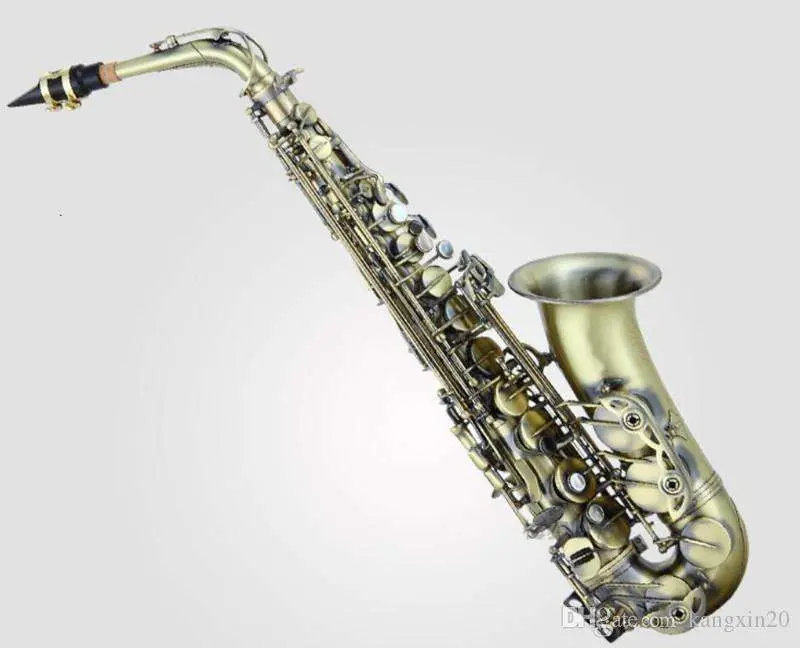
How to tune a saxophone
Whether you’re playing the saxophone in a small ensemble, in a full band, or even solo, tuning is essential. Good tuning produces a cleaner, more beautiful sound, so it’s important for every saxophonist to know how their instrument is tuned. The instrument tuning procedure can be quite tricky at first, but with practice it will get better and better.
Steps
- Set your tuner to 440 Hertz (Hz) or “A=440”. This is how most bands are tuned, although some use 442Hz to brighten up the sound.
- Decide which note or series of notes you are going to tune.
- Many saxophonists tune to Eb, which is C for Eb (alto, baritone) saxophones and F for Bb (soprano and tenor) saxophones. This tuning is considered good tone.
- If you’re playing with a live band, you usually tune in live Bb, which is G (Eb saxophones) or C (Bb saxophones).
- If you’re playing with an orchestra (although this combination is quite rare), you’ll be tuning to a concert A, which corresponds to F# (for Eb saxophones) or B (for Bb saxophones).
- You can also tune in to the concert keys F, G, A, and Bb. For Eb saxophones it is D, E, F#, G, and for Bb saxophones it is G, A, B, C.
- You can also pay special attention to the tuning of notes that are especially problematic for you.
- Play the first note of the series. You can watch the “needle” on the tuner move to indicate if it’s skewed to the flat or sharp side, or you can switch the tuner to tuning fork mode to play the perfect tone.
- If you clearly hit the set tone, or the needle is clearly in the middle, you can assume that you have tuned the instrument and now you can start playing.
- If the stylus is tilted toward sharp, or if you hear yourself playing a little higher, pull the mouthpiece a little. Do this until you get a clear tone. A good way to remember this principle is to learn the phrase “When something is too much, you have to break out.”
- If the stylus moves flat or you hear yourself playing below the target tone, lightly press on the mouthpiece and continue to make adjustments. Remember that “Smooth things are pressed down.”
- If you are still not successful by moving the mouthpiece (maybe it is already falling out of the end, or maybe you have pressed it down so much that you are afraid you will never get it), you can make adjustments in the place where the neck of the instrument meets the main part, pulling it out or vice versa pushing , depending on the case.
- You can also adjust the pitch a little with your ear cushion. Listen to the tuner tone for at least 3 seconds (that’s how long your brain needs to hear and understand the pitch), then blow into the saxophone. Try to change the position of the lips, chin, posture when you make a sound. Narrow the ear pads to raise the tone, or loosen to lower it.
- Do until your instrument is fully tuned, then you can start playing.
Tips
- Reeds can also be an important factor. If you’re having regular tuning problems, experiment with different brands, densities, and ways of cutting the reeds.
- If you’re having really bad problems tuning your saxophone, you can take it to a music store. Perhaps the technicians will fix it and it will tune up normally or maybe you want to exchange it for another one. Entry-level saxophones, or older saxophones, often don’t tune well, and you may just need an upgrade.
- Be aware that temperature can affect the setting.
- It is better to gradually get used to tuning to a given tone than with a needle, this will train your musical ear and allow you to further tune the instrument “by ear”.
Warnings
- Never try any of the advanced tool tuning methods unless you know what you are doing. Saxophone keys are very fragile and easily damaged.
- Be aware that most tuners provide concert tuning in the key of C. The saxophone is a transposing instrument, so don’t be alarmed if you see what you’re playing that doesn’t match what’s on the tuner screen. If the question of transposition scares you, this article is suitable for both sopranos with tenors and altos with basses.
- Not all saxophones are soundly tuned, so some of your notes may differ from those of other saxophonists. This issue cannot be solved by moving the mouthpiece: you will need to visit a professional.
How to Tune Your Sax- Ralph





